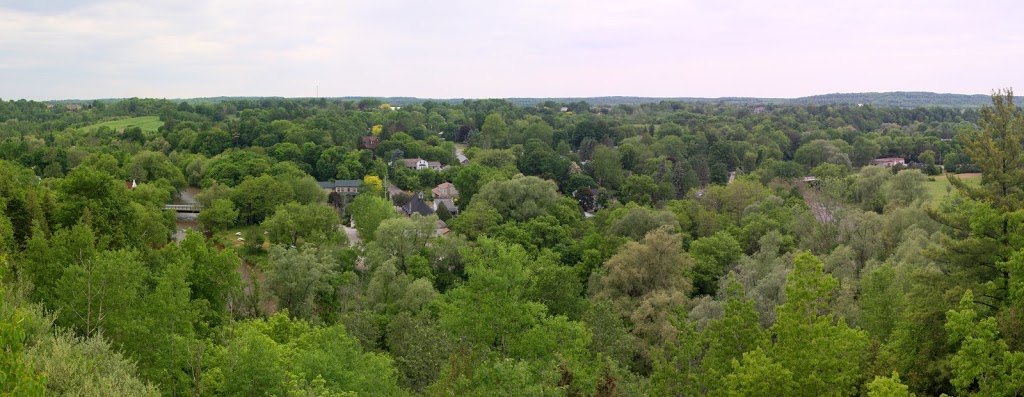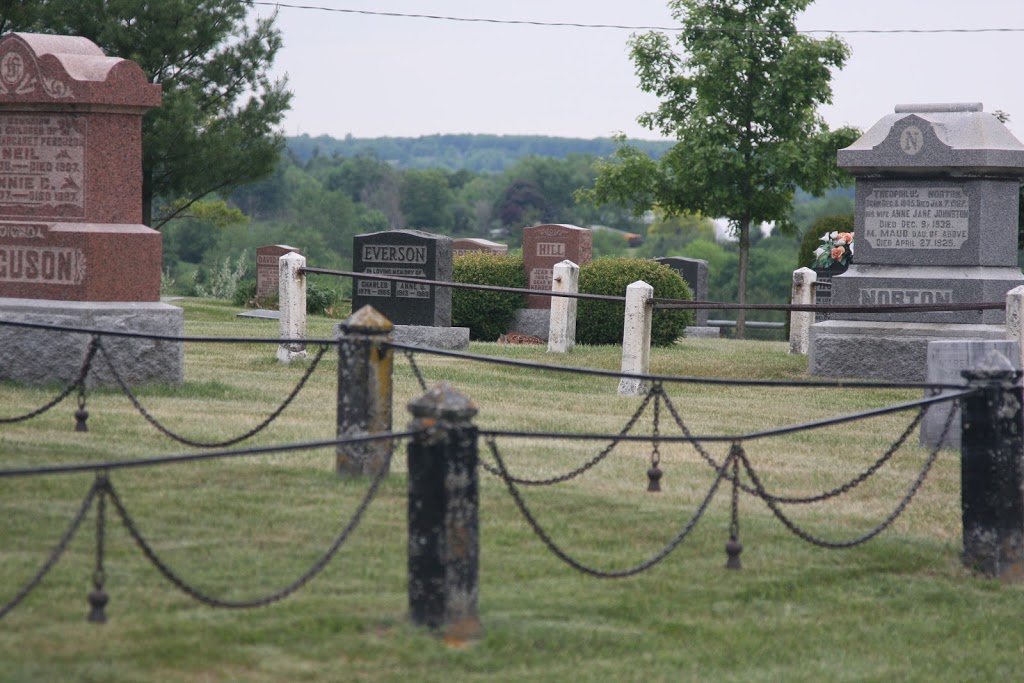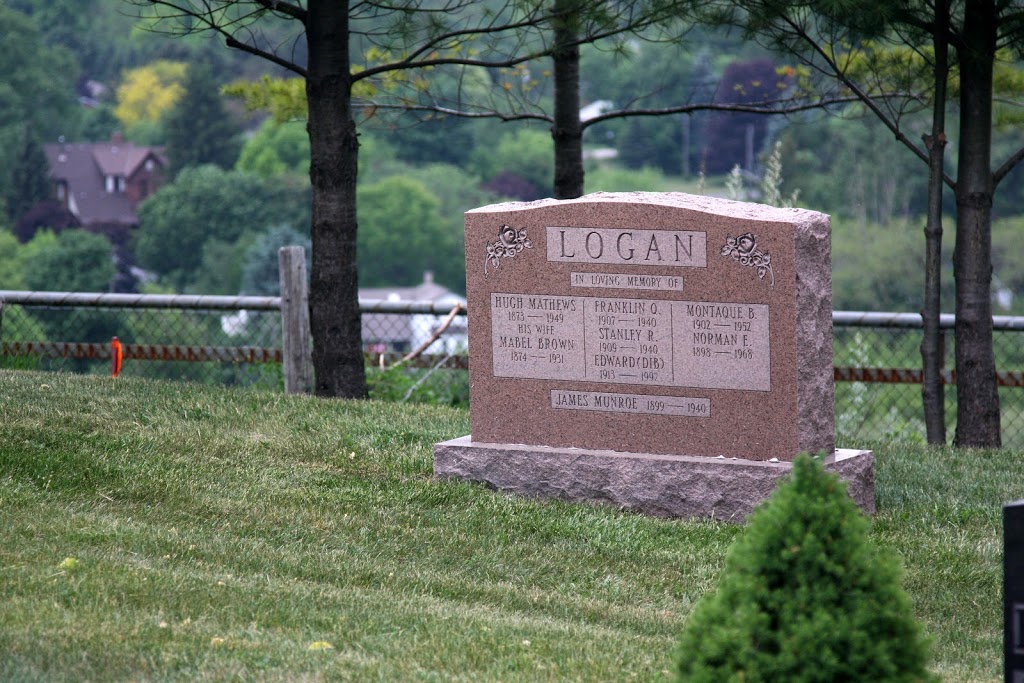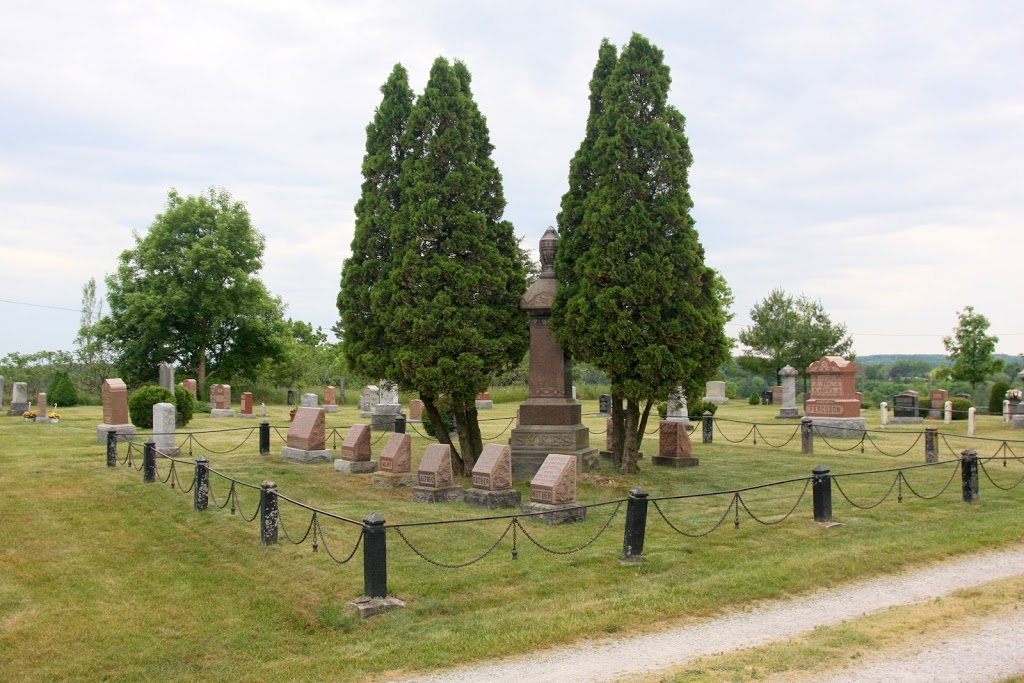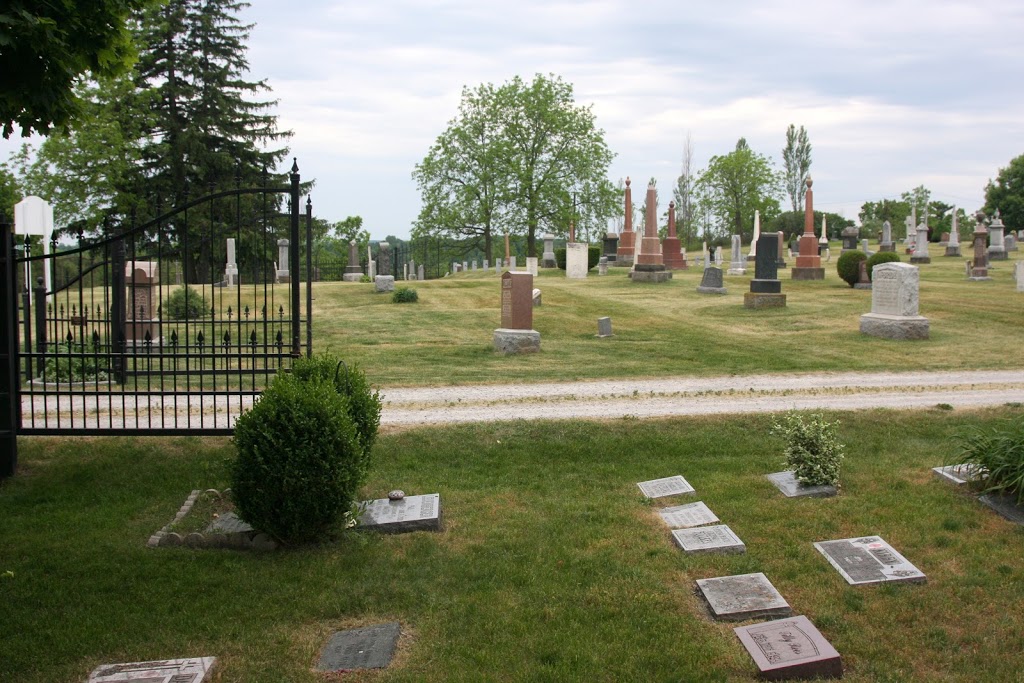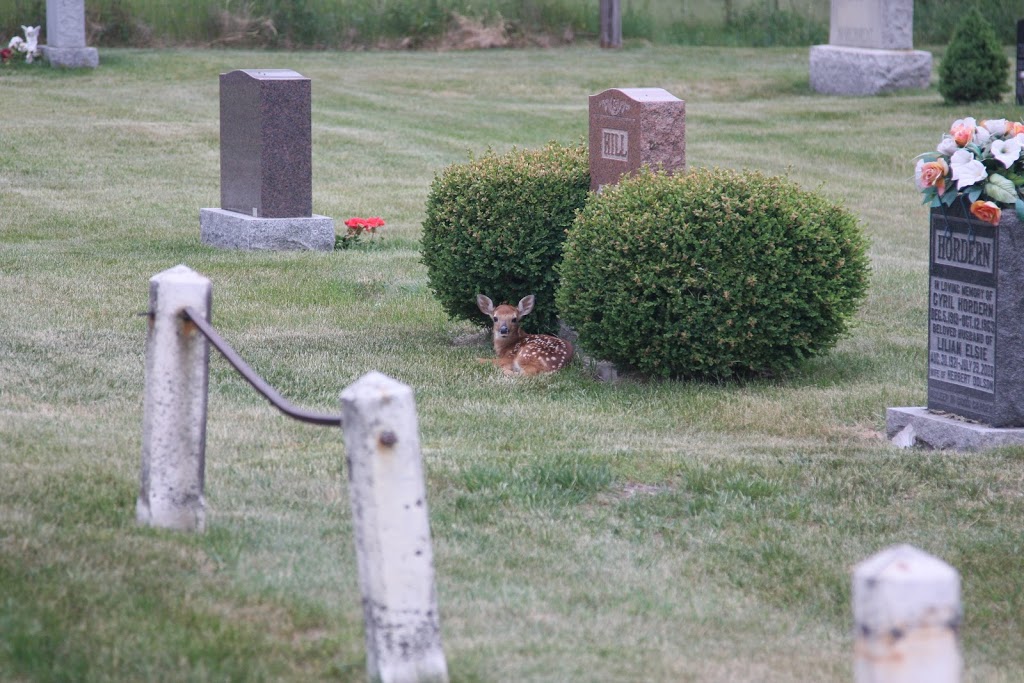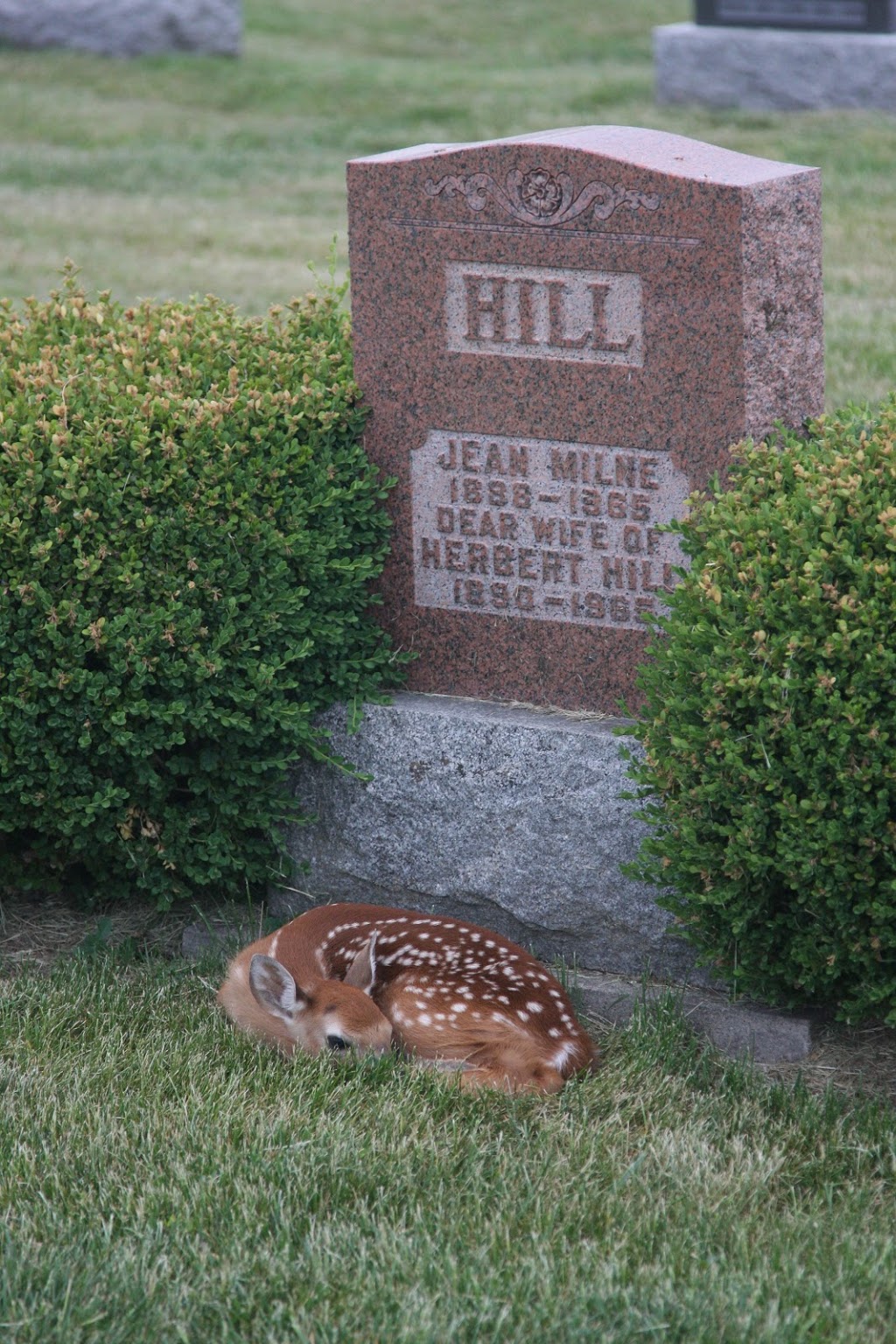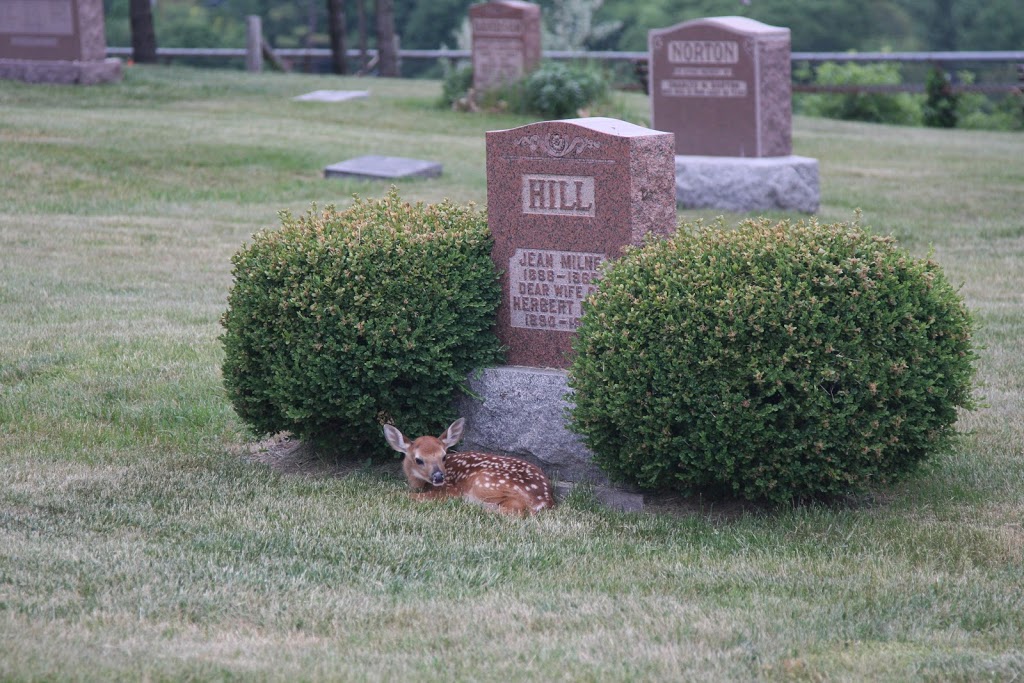(April 1, 2017, 12:54 pm)
This quiet little hill top cemetery is the resting place for most of the village families no matter their religion. The cemetery is still open and is run by a cemetery board and has a commanding view of the Glen nestled in the valley below.
The Glen Williams Cemetery is the last resting place of the settlers and pioneers who built this community. The names on tombstones may be familiar. Some are the names of streets in the hamlet. Pay a visit to this sacred place and and find yourself surrounded by their stories.
The 1840 deed to the Methodist Episcopal church in Glen Williams provided a site for "a Church Meeting-House or Chapel and Burying-ground." But the spot down by the river was not an appropriate place for burials, and it does not appear that any took place there.
In the Glen the Williams family chose a spot on the hill, overlooking the village, for use as a family cemetery. The earliest stone marks the resting-place of Ira, Elizabeth and Benajah's son, who died in 1833 just eleven days after his fifteenth birthday. Another son, George, lies nearby; he died in 1836, also at a tender age: he was 23. A grandson, Alfred (Joel's boy) died in 1844.
Others besides the family used the cemetery. There is a memorial to Robert Brown, who died in 1834. That is on a stone that was put up in 1876, and it is uncertain whether he is buried there. But near the Williams plot there are stones from 1845, for Latham Stull, and for Margaret, wife of Jacob Stull. Benajah Williams died on November 22, 1851. His son Charles must have felt that the time had come for the cemetery to be established on a more regular basis, and on December 22 he made over the land for a public burying-ground, "in consideration of the sum of one shilling of lawful money of the Province of Canada to him in hand paid." His brother Joel (now described as a carpenter, rather than a blacksmith as in an earlier deed) and another brother Jacob, were among the first trustees. The others were John Cook and John Stull, yeoman, and Thomas B. Frasier, tailor.
The original grant was of one acre, but with the passage of time, more land came to be needed. The oldest section bordered on the road, and is easily distinguished by the old limestone markers in it. In 1905 the Sykes and Ainley mill donated the piece of land between it and the top of the bank of the hill above the river. A further piece was bought for thirty dollars in 1919. It was purchased from John Haines (1870-1932), a native of Somerset, who purchased Fred Cook's orchard and farm next to the cemetery. Then in 1957 Sheridan Nurseries gave a further piece to the cemetery board.
The Glen Williams Cemetery continues today as a community cemetery governed by a volunteer Board Of Directors. They do not receive government funding or maintenance assistance but rely on private donations.

